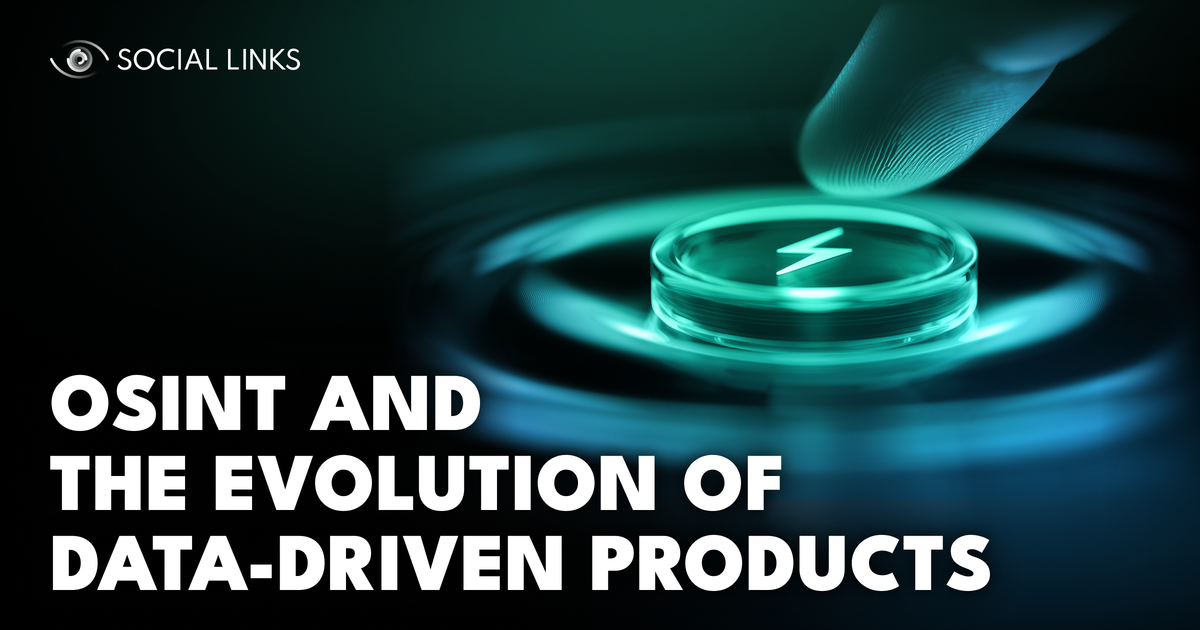OSINT and the Evolution of Data-Driven Products


In today’s digital economy, every product that runs on data is only as strong as the information that fuels it. While traditional data-driven products have long relied on the structured, proprietary sources—customer databases, transactional logs, and enterprise systems—these closed ecosystems, although accurate, often lack the timeliness, diversity, and human context that modern organizations need to stay ahead of risk and change.
In this article, we explore how open-source intelligence (OSINT) methodology is reshaping data-driven products across industries. By integrating legally accessible, real-time data from the open web, OSINT expands the boundaries of what products can analyze, detect, and predict. From fraud prevention and AML to marketing analytics and cyber defense, OSINT is transforming static datasets into dynamic intelligence engines.
OSINT is the practice of collecting and analyzing publicly available data to generate actionable insights. Unlike proprietary datasets, OSINT draws from a vast, constantly evolving information landscape that includes:
This data layer provides both technical and behavioral context. It can connect individuals to organizations, reveal ownership networks, trace emerging cyber threats, and highlight market sentiment—all in real time. As a result, OSINT has become a new class of alternative data that complements traditional data pipelines with speed, diversity, and verifiability.

Financial institutions use OSINT to enhance transaction monitoring with external context—identifying suspicious entities or activity patterns traditional data misses.
Example: Cross-checking a shell company’s directors in public registries and sanctions lists reveals connections to restricted entities before transfers are made.
OSINT transforms static verification into dynamic validation. Beyond documents, it cross-references identities across open data sources to verify claims, detect inconsistencies, and enrich profiles with behavioral and relational insights.
Example: A KYC system confirms an applicant’s claimed city through recent social activity and geotagged posts, while background screening identifies undisclosed affiliations and reputational risks from public archives and corporate records.
Fraud networks reuse data and patterns across open platforms. OSINT uncovers such linkages through shared usernames, templates, or infrastructure traces.
Example: A fraud detection tool maps reused aliases and email templates across forums and paste sites, exposing a coordinated scam across multiple e-commerce platforms.
OSINT strengthens early-warning systems by monitoring hacker forums, darknet leaks, and repositories for emerging vulnerabilities or stolen data.
Example: Monitoring public forums reveals discussions of a new exploit before it spreads, enabling security teams to patch up vulnerabilities in advance.
Brands leverage OSINT to detect impersonation, phishing, and data leaks that threaten their digital reputation.
Example: Domain monitoring flags a newly registered site impersonating a corporate login page. SSL and DNS analysis confirms its malicious origin, allowing a prompt takedown.
Beyond security, OSINT enhances commercial intelligence. By monitoring public data, teams can personalize outreach, refine lead scoring, and identify market opportunities.
Example: A B2B platform enriches CRM records using social and corporate updates, allowing sales teams to prioritize prospects based on real-time signals.
The difference between traditional data and OSINT is timing and perspective. Closed systems record what has happened; OSINT reflects what’s happening now.
It introduces three defining advantages for data-driven products:
With platforms like SL API, organizations can integrate these capabilities directly into their existing data ecosystems—automating entity extraction, identity correlation, and trend detection at scale.
OSINT has evolved from a niche intelligence discipline into a foundational capability for modern data-driven products. It bridges the gap between structured corporate data and the living, unstructured web, revealing what traditional systems overlook.
By adopting OSINT methodology, organizations gain richer visibility, faster reaction time, and a deeper understanding of the people, entities, and risks shaping their operations.In a world where data is constant but truth is dynamic, OSINT turns openness into advantage.
Traditional data comes from closed, structured systems like CRMs or financial databases. OSINT relies on public, unstructured sources—social media, registries, and web content—to provide real-time and contextual intelligence.
Yes. OSINT only uses publicly accessible data gathered through lawful means. Ethical and compliant implementation ensures adherence to privacy and data protection laws.
It enriches existing data with behavioral, relational, and temporal context—helping tools detect anomalies, validate identities, and make predictions that static databases cannot.
Finance, cybersecurity, compliance, law enforcement, and marketing all leverage OSINT to enhance visibility, risk assessment, and situational awareness.
By integrating OSINT APIs like SL API, teams can automate data discovery, correlation, and enrichment—connecting open-source insights directly to enterprise analytics pipelines.
Want to see how OSINT can elevate your data-driven workflows? Book a personalized demo with our specialists and discover how SL API integrates open data, automation, and enrichment into any intelligence-driven product.